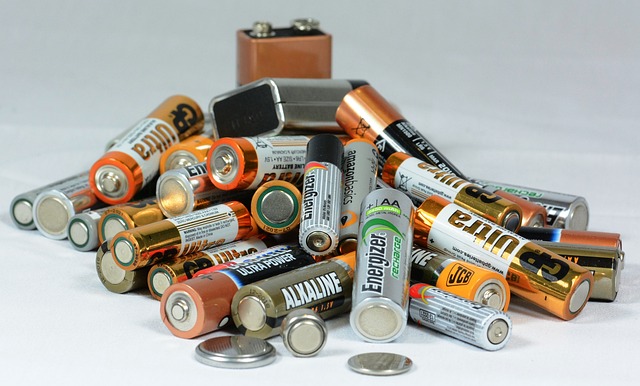Recharging Non Rechargeable Lithium Batteries
Sep 29, 2019 Pageview:6078
Most of the modern devices we use today requires to be powered by lithium-ion batteries, but there are many other devices which functionality is not suitable for energy from these types of batteries. Some of the devices still have compartments that you need to open and insert some batteries you bought yourself.
Suppose you need a AAA battery; do you make use of a disposable battery or you get one (li-ion) that you can recharge whenever it’s low? So, in this article, we are going to discuss the difference between these batteries, why they can or cannot be used interchangeably. We’ll also see the science behind them, as well as cost issues.
Can regular batteries be used in place of a rechargeable battery?
A lot of times, we get the question if rechargeable batteries can be used in devices that are generally made to use alkaline batteries.
First off, it is important to note that disposable batteries are all alkaline batteries. Chemically, what this means is that the cathode of the battery is composed of manganese oxide while the anode is made of zinc powder. Then the electrolyte of alkaline batteries is potassium hydroxide (this is the alkaline portion of the battery). Finally, the energy-generating reaction corrodes the anode, thus avoiding further reactions. It is at this point the battery is considered dead.
Rechargeable batteries are available in different forms. There are the ones we use with our laptops and smartphones, these are lithium ions. The lithium-ion batteries make use of lithium and cobalt oxide as the cathode and they use carbon as their anode. Unlike the disposable batteries, it is possible to return the electrons from the cathode back to the anode, this is done by forcing electricity through it. (This is what occurs when you plug your device to a power source, like a wall socket -otherwise known as charging).
So, having known why some are rechargeable, and others are not, can regular batteries be used in place of rechargeable batteries? Yes, but only if the energy stored in it can power the device. On the other hand, larger capacity rechargeable batteries can also be replaced in place of most standard alkaline batteries in various devices. But you should know that high drain devices can work best with rechargeable batteries because of the high level of energy stored in them. Ideally, rechargeable batteries are to be used in high-drain devices such as digital cameras, portable electronic devices, MP3 players, and so on. Alkaline batteries are however more suitable for slow-drain devices. They include but are not limited to non-rechargeable emergency torches or smoke detectors.
Can all lithium batteries be recharged?
If you’ve meant to ask this question, here is the answer. It is important to note the specificity of the question. Can all ‘lithium-ion’ cells be recharged? Yes, of course, they are all rechargeable! However, not all lithium batteries are rechargeable.
Other types of lithium batteries (note that there is an omission of "ions") are what is known as primary cells, and therefore they cannot be recharged. Be careful not to recharge these (primary) cells as doing so may cause it to overheat, expand and even "explode".
What is the difference between rechargeable and non-rechargeable batteries?
Before explaining in details what the difference between non-rechargeable and rechargeable batteries are, it is important to first know the chemistry between both. The knowledge of this will help to better understand what the difference between both is.
What happens in non-rechargeable batteries?
The non-rechargeable batteries are made of two electrodes, they are the cathodes and anodes, respectively, and they are mostly inside the electrolytes. When the electrodes get connected, chemical reactions are occurring at the cathode as well as the anode, (as we earlier explained at the beginning of this article). It is the chemical reactions occurring at these sites that cause an electron flow from the battery’s anode to the cathode. The electrons flowing through them have electrical energy and once an electrical component is connected between the electron pathways, the electrons lose the energy they possess as they pass through the component. It is the electrical energy lost by these electrons that are transformed into the form of energy that powers our devices, which is useful to us. For example, a bulb converts electrical energy into the light or thermal energy we enjoy. And a motor will convert electrical energy into the needed kinetic energy. This reaction is not reversible.
What are rechargeable batteries?
With a rechargeable battery, you can reverse the chemical reactions which allow the batteries to drive or conduct electrons through a circuit. The lithium-ion battery is a good example of a rechargeable battery. It is the major battery type that is used to provide most cell phones and laptops, electronic cars, flights, etc. with the required energy they need to function properly. When the batteries are working and are being used to power the device, it means that the battery is discharging. The negative terminal during this reaction releases lithium ions, which are migrating from the electrolyte to the positive terminal.
Electrons also flow, from the negative terminal to the positive terminal outside the circuit. When the battery is being charged (or recharged), it absorbs energy from an external power source and this flow is reversed, i.e. Lithium ions, therefore, flow from the "positive terminal" to the battery’s "negative terminal". This action restores the battery's ability to hold and conduct current again. Hence we say the reactions in a rechargeable battery are reversible.
Difference Between Rechargeable and Non-Rechargeable Batteries
There are quite several differences between rechargeable and non-rechargeable batteries. When there is an option to choose between batteries you are to use, you must consider these differences before you choose which to use. Both types of the battery may be suitable in different conditions, but in the long run, a rechargeable battery is best. Here are a few differences between both
· Reusability after complete discharge
If you use a rechargeable battery, the first or even tenth discharge is not the end of the battery life. You are still able to recharge the battery and use it again. However, this is not the case with an alkaline or non-rechargeable battery. After the first discharge, you are no longer able to use it and the battery becomes useless. You must get another to continue using your device.
· Cost
To know if to use rechargeable or non-rechargeable battery -relative to the price, you need to consider how long you want to use the device. If it is a one-off device, which is needed just once, or for a few minutes, you may use a non-rechargeable battery. If, however, you want to use the device a couple of times, ranging from a few weeks to a year or two, then a rechargeable battery is more cost-effective.
The price of a rechargeable battery may at first seem higher, but it is a one-time payment and you can use the battery for as long as possible. Unlike that of the non-rechargeable battery which needs to be changed so often.
· Types
Another common difference between both batteries is the type of battery. The rechargeable batteries come in the form of nickel-cadmium, lead-acid, and of course, lithium-ion batteries, while non-rechargeable batteries include zinc-carbon, alkaline, and leclanche batteries.
- Prev Article: Li-ion Battery Charge Cycles
- Next Article: Li-ion Battery Charging Myths
Leave Message
Hottest Categories
-
Hottest Industry News
-
Latest Industry News











